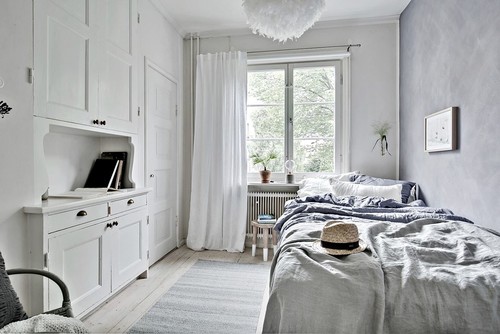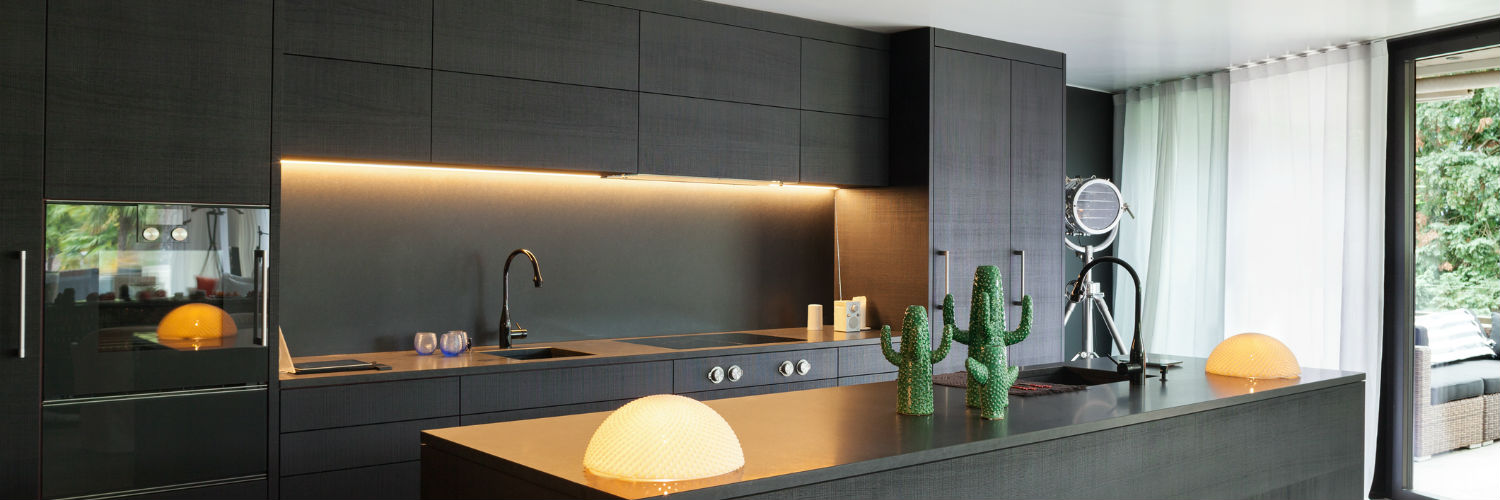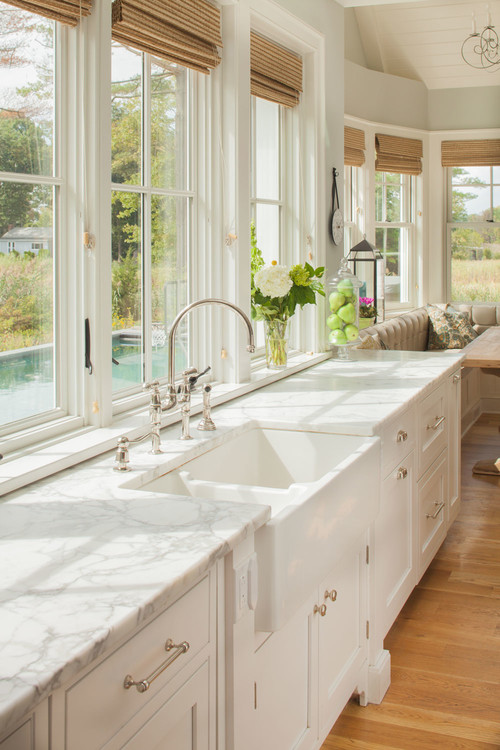How to Get Wood Flooring on Any Budget

 Hardwood flooring is often considered a must-have feature by new homeowners or those undertaking a remodeling project. Wood is a natural, renewable resource, plus wood flooring complements all types of home decor, from traditional to contemporary. Hardwood flooring is often considered a must-have feature by new homeowners or those undertaking a remodeling project. Wood is a natural, renewable resource, plus wood flooring complements all types of home decor, from traditional to contemporary. The downside is that wood floors, especially solid wood floors, can be expensive. Some exotic wood species, such as Brazilian walnut, can cost more than $15 per square foot — and that doesn’t include installation labor. However, you can find alternatives that give you the look of real wood at a reduced price — some as low as $2 or $3 per square foot. Here are some of the best budget-friendly hardwood floor choices.
Hardwood flooring is often considered a must-have feature by new homeowners or those undertaking a remodeling project. Wood is a natural, renewable resource, plus wood flooring complements all types of home decor, from traditional to contemporary. Hardwood flooring is often considered a must-have feature by new homeowners or those undertaking a remodeling project. Wood is a natural, renewable resource, plus wood flooring complements all types of home decor, from traditional to contemporary. The downside is that wood floors, especially solid wood floors, can be expensive. Some exotic wood species, such as Brazilian walnut, can cost more than $15 per square foot — and that doesn’t include installation labor. However, you can find alternatives that give you the look of real wood at a reduced price — some as low as $2 or $3 per square foot. Here are some of the best budget-friendly hardwood floor choices.
Calculating the Overall Price
The products listed below go from most expensive to least expensive, but there’s a lot of overlap among the categories. For example, some solid wood products are less expensive than some luxury vinyl tiles. Before you make your final decision, factor in the cost of professional installation, which can add as much as $3 to $10 per square foot to the total cost of a flooring project. Some of the items that can drive up installation costs include:
• Removing and disposing of the old flooring
• Repairing the subfloor when necessary
• The size and shape of the room(s)
• Stair installation
If you’re an experienced DIYer, you can save money by installing the floors yourself. Beginners should leave the job to the professionals, though — you may end up making mistakes that are even more expensive to fix.
Solid Wood
This is usually the most expensive option, but there are ways to reduce the cost, especially in the long run. When properly maintained, solid wood flooring will last as long as the house stands. You can freshen up the look at any time by sanding away the old finish and restaining and sealing the floor.
Some wood species are more expensive than others. Fortunately, many of the most common types, such as oak or maple, fall into the low- to mid-range of costs. Solid wood products can come finished or unfinished. If the floor is unfinished, the installer will stain and seal the floor once it is in place, which adds to the installation costs. On the flip side, the prefinished product may cost more up front.
Engineered Wood

These products are constructed of multiple thin layers of material that are bonded together under pressure. The top layer is made from a familiar wood species — such as oak or maple — and is usually treated with a factory-applied finish that resists dirt and scuff marks. Engineered wood floors are less likely than solid wood to wrap and twist because of moisture and humidity, so they can be installed in basements and bathrooms. Some products feature click-in-place installation — no need for adhesives or fasteners — which is an easier, faster installation method perfect for DIYers. However, a vapor barrier needs to be installed or attached to the flooring.
Bamboo
Bamboo floors are manufactured to either look like traditional wood flooring or showcase their distinctive grass-like look. Some bamboo products are harder than solid wood flooring. They are strong and long-lasting, but are easy to scratch and are not recommended for areas prone to moisture. Bamboo is a type of grass and grows to maturity much more quickly than trees do, which makes it a sustainable, eco-friendly option. Click-in-place installation is available for some products.
Porcelain Tile

New porcelain tiles can be made to look like anything, including real wood. Some products are available in planks that have a wood-like texture. Porcelain tiles are an inexpensive, easy way to achieve a “reclaimed” wood look — many tiles mimic the texture and color variation of aged planks. As with regular tiles, they are durable and can be used in wet areas, including bathrooms. They are also stain-resistant and much easier to clean than real wood — spills wipe up quickly, and using just water and a mild soap makes them shine. Porcelain tiles must be installed using mortar and grout.
Luxury Vinyl Tile

As with porcelain tiles, luxury vinyl tile (LVT) can look like wood and come in traditional-style planks. LVTs are thicker and more durable than standard vinyl. They are usually waterproof, are easier to clean than true hardwoods, and can be installed in any room in the house. To prolong their durability, many LVTs are treated to resist color fading and scratches.
Laminate

Laminate floors are composed of a high-density hardboard core protected by a melamine layer that can be made to look like anything — including real wood. The top layer protects against dirt and scuff marks, but the material should not be installed in rooms that are exposed to moisture. Click-in-place installation is available.
Hardwood flooring is a classic, timeless look that fits a wide range of design options. Thanks to today’s selection of flooring products, it’s easy to get a wood look at a lower cost. When making your final decision, be sure to include both the material costs and the installation costs. That way, you’ll get the look you want at a budget-friendly price.
DIY author Fran Donegan has written several books, including Paint Your Home. He also writes for The Home Depot about homeownership and projects that add value to your house. To see a selection of hardwood flooring options like those described by Fran in this article, please click here.
This article is editorial content that has been contributed to our site at our request and is published for the benefit of our readers. We have not been compensated for its placement.
Source: CB Blue Matter Blog
The Lazy Guide to Spring Cleaning at Home


After a long winter, nothing feels better than having a clean and sparkling home. But, actually jumping into a deep clean is another story. Here are some simple tips to whip your home into shape without breaking a sweat:
#1 Wall Cleaning
A Magic Eraser is your best bet for tackling walls — it can spot clean anything from splatters to crayon marks. It’s tough enough to reach the cobwebs that collect in the corners of your walls and ceiling. You can also cover the bristles of a broom with a cloth or old T-shirt and use it to knock down any dusty spots.
#2 Carpets and Rugs
Take a little more time vacuuming the high-traffic areas of your house. (Make sure you don’t forget to spot treat any stubborn stains with a stain-removal product.) If your rug or carpet has lingering odors, sprinkle some baking soda over it and let it sit for a few hours. Vacuum up the baking soda and you’ll find the odors have disappeared.
#3 Mattress Ideas
Give your mattress cover a thorough cleaning in the washing machine — don’t forget to throw in a cup of white vinegar to boost the cleaning process. Sprinkle baking soda on your mattress while you’re washing the cover. You can vacuum it up later when you’re making the bed.
#4 Shower Care
Don’t knock yourself out trying to clean glass shower doors. Add a couple drops of water to your dryer sheets and use them to wipe down your shower doors. You can even let your showerhead clean itself overnight while you sleep. Simply tie a bag filled with white vinegar around your showerhead and let it soak overnight. Remove the bag in the morning for a non-clogged shower experience.
#5 Toilet Scrubbing
Have water stains built up in your toilet? Cola can help you attack these stains with little effort. Just pour some in the toilet, let it sit for several minutes, then flush.
#6 Oven Shine
If you have an oven with a self-cleaning feature, spring is a great time to finally run that cycle. Otherwise, mix baking soda with a bit of water and use it to quickly clean up grease and various other spills inside the oven.
#7 Clutter Solutions
When you don’t have time to clean but you need your house to look presentable, tackling clutter is the quickest way to create the illusion of a clean house. Zip through each room of the house and put anything that doesn’t belong into a basket. This strategy requires very little work and can make a big difference in your home’s appearance.
Conclusion
Although these tips won’t completely eliminate the effort involved in spring cleaning, they’ll make the job a whole lot easier. Spring is a time of new beginnings — if you use even a couple of these ideas, your home will enjoy a clean and fresh start to the upcoming season.
Source: CB Blue Matter Blog
5 Ways to Start 2018 Right in Your Home

 To get your home in tiptop shape for 2018, here are some important and efficient ways to get it ready.
To get your home in tiptop shape for 2018, here are some important and efficient ways to get it ready.
Guest post by Andrea Davis
2018 is almost here! While you might consider making some New Year’s resolutions, you first need to think about your end of the year list. To get your home in tiptop shape for 2018, here are some important and efficient ways to get it ready.
1. Clean, clean, CLEAN!
If you haven’t taken care of the essential house cleaning chores, now is the time. You’ll want to quickly or deeply clean many areas of your home. These include:
- Windows
- Linens
- Floors
- Cabinets/countertops
- Appliances
- Gutters & downspouts
- Air vents
Not only does this give your home a refreshed look, it also keeps you financially savvy going into 2018. Without the proper cleaning, areas like the air vents and gutters can lead to expensive home repair bills.
2. Purge & Recycle
Nobody likes looking at a full closet, especially if you have holiday presents to add. So go through every bit of storage in your home – closets, attic, basement, garage, shed, etc. – and remove what you don’t need. You can either throw it away or recycle it by donating to a local secondhand shop. That way, you have tons of space for next year’s discoveries.
3. Increase Efficiency
If you’re going through bills and notice a marked increase in utility costs, now is the time to plan out an efficient home in 2018. This could be as simple as turning off the lights more often and conserving water. On the other hand, if you have some extra dollars, you might consider improvements like:
- Double or triple-paned windows
- Solar panel(s)
- Upgrade your faucets and water outlets
4. HVAC TLC
One of the most important – and expensive – parts of your home is the HVAC system. It keeps the house warm in the winter and cool in the summer. Because it does so much work, it needs some fine-tuning and maintenance at least every six months. To make sure you avoid an expensive bill in 2018, go through the system. Replace the filter, clean out the vents and make sure it’s all working smoothly. If you aren’t an HVAC pro, you can find plenty in the neighborhood to come for a quick checkup.
5. Review the Exterior
Roofing, landscaping, doors, siding – have you given them a thorough look? All of these are important to a beautiful appearance and optimal safety. You need to check for cracks, holes, overhanging branches and the like. You can always get a home inspector for a more in-depth review, but most of it you can do yourself. Doing a quick circle around the house with some spackle or caulk works at least in the short term.
Conclusion
Going into 2018 means letting go of 2017’s hassles. To feel free of any stress, you should take care of the essentials, including your home. Maintenance and some cheap upgrades could make all the difference personally and financially in the New Year. Don’t feel you have to go all out, or else you’ll be too tired for new tasks. Make sure there’s a nice balance of work and play so you get the best start to 2018.
Source: CB Blue Matter Blog
7 Things to Do Before Moving into Your New Home


The keys are yours, now what?
Congratulations! You’re a new homeowner. While you may not be able to wait to move in, there are a few things you should consider tackling before hanging those family photos on the walls.

1. Change the locks – For peace of mind, it’s a good idea to change out the locks on your exterior doors to ensure that anyone the previous owners may have given a key to can no longer access the property. According to Home Advisor, the average homeowner spends between $100-$300 hiring a locksmith.
2. Paint – Don’t love the lemon yellow the previous homeowners chose for the master bedroom? Painting your new home will be infinitely easier if you can do so before moving furniture into the space. Head to your local paint store to pick up a few samples to test before committing. Take your time and be sure to view the color swatches in different lights before committing. There are also handy online visualization tool like the Benjamin Moore Personal Color Viewer.

3. Take care of your floors – Like with painting, treating and refinishing floors is much easier without furniture in the way. Costs for this project will vary depending on the size of the job, but you can estimate roughly $200 for supplies and equipment. Check out this useful guide to refinishing wood floors from This Old House before heading to the hardware store.

4. Make any necessary repairs – Does the bathtub need to be re-caulked or the tile re-grouted? Do the floor boards creak? Make a list of priority repairs and tackle them one by one. You’ll be happy you did a few months from now when other projects crop up on the honey do list.
5. Clean from top to bottom – The only thing better than a new home is a clean new home. Now is the best time to give every nook and cranny of your home a deep clean. Scrub the inside of appliances like the refrigerator, oven, dishwasher and microwave. Wipe down walls and baseboards with a damp cloth. Looking for clever ways to banish grease and grime? Check out our Home Tip of the Day video series.

6. Set up your utilities – Call your electric, gas, cable and water utility providers to make sure service is transferred to you after closing. You’ll also want to research when trash and recycling pick-up are scheduled for your zone.
7. Change your Address – While you may want those mortgage bills to be sent elsewhere, it’s important to file a change of address with the US Postal Service to ensure that all mail is forwarded to your new address following your move. Also be sure to alert friends and family of your new address. They’ll need to know where to send that housewarming gift!
Now, the only thing left to do is celebrate! Looking for great housewarming party ideas? Try one of these backyard flings!

 Facebook
Facebook
 Twitter
Twitter
 Pinterest
Pinterest
 Copy Link
Copy Link































